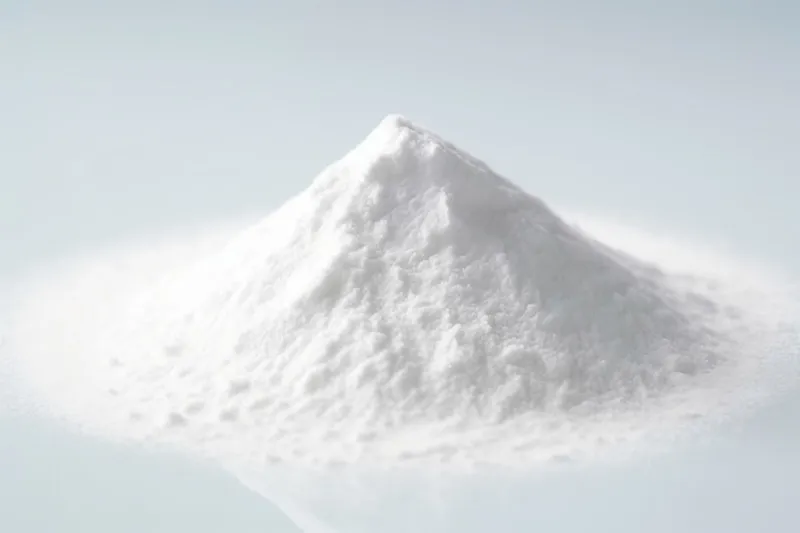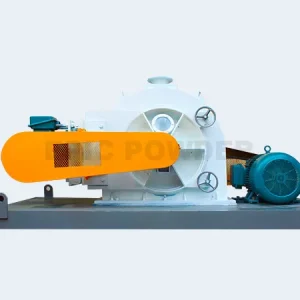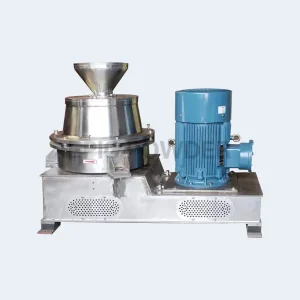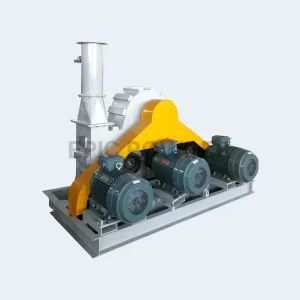Polyvinyl chloride (PVC) is a cheap and readily available polymer material with a wide range of applications in industries such as footwear, pipe fittings, wire, cable, and calendered films. However, the poor toughness and lack of thermal stability of pure PVC materials have limitations in many applications. Therefore, in many industries, PVC composites modified with various fillers have been developed to improve their mechanical properties and thermal stability.

For instance, by adding a certain amount of calcium carbonate (CaCO3), the hardness of PVC products has been improved, resulting in improved performance and production costs can be controlled. As research continues, it has been found that the ease of processing calcium carbonate can greatly enhance its application value and potential in PVC materials.
Comparison of different calcium carbonate applications in PVC materials
Wet Calcium Heavy
Deng Kewen and his team applied Guangyuan dry milled heavy calcium (GY616), Guangyuan wet milled ultra-white ultra-fine heavy calcium carbonate (CC-6000A), and commercially available light calcium to the base formulation of PVC calendering film, and analyzed the effects of calcium carbonate varieties on the glossiness, tensile strength, specific gravity, heat resistance, and covering power of the prepared films. The gloss and specific gravity of the calendered film with the addition of wet heavy calcium was consistent with that of the composite lightweight nano-calcium, and the tensile strength and better heat resistance were improved. The effects of CC-6000A, gloss, tensile strength, specific gravity, covering power, and heat resistance of CC-6000A and calcium composite lightweight nano-calcium were evaluated using four formulation systems. CC-6000A had higher gloss and tensile strength, specific gravity, and better covering power and heat resistance compared to calcium composite lightweight nano-calcium.
Calcium carbonate nanoparticles
Liu Yaxiong et al. investigated the effects of key factors such as carbonation initiation temperature, fatty acid C chain length, oil melting point and iodine value, and composite surface treatment agent on the properties of calcium carbonate nanoparticles and polyvinyl chloride (PVC) calendered film. The results showed that, when the carbonization starting temperature was 24℃, the generated calcium carbonate was regular cubic, with a specific surface area of 22.3m2/g, an average particle size of 80nm, a whiteness of 96%, fewer particle agglomerations, and the smallest secondary particle size, with a D50 of 0.43 μm; and the calendered film prepared with this calcium carbonate had the highest luster, the best ink-absorbent property, and the best overall performance.
Xie Zhong et al. used limestone as raw material to generate lime by calcination, and used the double tower continuous carbonization method to produce calcium carbonate nanoparticles. Research the surface treatment agent composed of fatty acids, vegetable oils, nonionic surfactants, coupling agents, etc., and figured out the 3-step calcium carbonate surface activation treatment process to produce nano activated calcium carbonate with low oil-absorption value, good processing performance and good dispersibility, which is used as a filler and reinforcing agent in the production of PVC drainage pipe, and the tensile yield strength, elongation at break, longitudinal shrinkage of the drainage pipe pressure, but still for the water pipe to restore the original shape, the product has excellent performance.
Calcium carbonate in different forms
Dong Dongdong et al. prepared five kinds of calcium carbonate particles with different morphologies, namely, flake, rhombus, rod, sphere and cube, by chlorination method, and investigated the effects of different morphologies on the mechanical properties of soft PVC films. The results show that different shapes of calcium carbonate have improved the mechanical properties of PVC film, PVC film tensile strength and elongation at break have increased significantly; among them, the rod-shaped shape of calcium carbonate on the mechanical properties of PVC film is the best, tensile strength of 27.11MPa; rhombic shape of calcium carbonate modified PVC film has the highest elongation at break, for 98.23%.
Hu Hongchuan et al. studied the effect of calcium carbonate, heat stabilizer, ACR impact modifier on the mechanical properties of highly filled PVC pipe. The test results showed that with the increase of calcium carbonate dosage, the tensile properties of PVC pipe gradually decreased, and the impact strength and bending strength increased.
Calcium carbonate compounded with talc
Li Na et al. prepared PVC/calcium carbonate/talc composites by melt blending process, and investigated the effects of talc and calcium carbonate on the mechanical properties and processing properties of PVC composites. The results showed that the Vicat softening temperature of PVC composites was the highest (78.6℃) when the compounding mass ratio of calcium carbonate to talc was 10∶20; the bending strength of PVC composites was the highest (77.81MPa) when the compounding mass ratio of calcium carbonate to talc was 15∶15; the notched impact strength of PVC composites was the highest (7.738kJ/m2) when the compounding mass ratio of calcium carbonate to talc was 20∶10; and the notched impact strength of PVC composites was the highest (7.738kJ/m2) when the compounding mass ratio of calcium carbonate to talc was 20∶10. 7.738kJ/m2); the highest flexural modulus (6300MPa) of PVC composites when the mass ratio of calcium carbonate to talc was 5:25.
Modified calcium carbonate
Yang Dongdong et al. investigated the effects of the type and content of calcium carbonate on the properties of PVC/CaCO3 composites. The results showed that calcium carbonate modified by stearic acid and titanate coupling agent composite had the best effect on the comprehensive performance improvement of the composites, and the impact strength was increased by 15% compared with the composites with unmodified calcium carbonate added.
Deng Chuanfu et al. explored the effect of modified nano-CaCO3 on the comprehensive performance of PVC composites. The results showed that by introducing excessive hydroxyl groups in the wet modification stage of nano calcium carbonate, it helps to enhance the graft-coating effect of silane coupling agent, and the nano fillers with better dispersion and processability can be obtained, which can effectively improve the thermal stability performance of PVC composites, promote plasticization, and achieve the reinforcing and toughening effect of composites.
No added calcium carbonate
Zhang Weifang et al. prepared uniformly dispersed nano-calcium carbonate emulsions by microemulsification, and then synthesized two nano-CaCO3/PVC composite resins by in-situ polymerization.The nano-CaCO3/PVC composite resins showed simultaneous increase in apparent density and plasticizer uptake, better thermal stability, improved notched impact strength, and elevated elongation at break, as compared to the blank resins.
At present, the rapid development of domestic specialized calcium carbonate, category obvious growth, but on this basis to produce high-end products is still relatively small, product value-added enhancement there is still some space. calcium carbonate for PVC is a relatively mature special-purpose products, the research results have a certain degree of systematic, on the selection of calcium carbonate, the use of modifiers, the control of the processing process have certain results, it is worthwhile to draw reference to and development.



